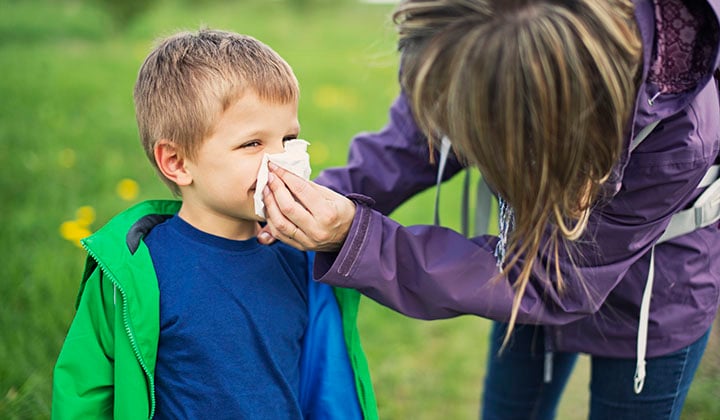Kids and springtime allergies: 6 mistakes you might be making

After a long and cold winter, spring is finally here. And now that the temperatures are warming up, it’s also time for that other season—the one that’s just a little less exciting: allergy season.
We had an early winter this year, which means that everything blooming outside early and right now will be producing pollen on a more condensed schedule than normal.
Unfortunately, that means we may be on track for a more intense and prolonged allergy season this spring, too.
If you’re one of the many parents whose kids battle seasonal allergies, here are six common mistakes you’ll want to avoid:
- Waiting too late to start allergy medication. If you know your child has seasonal allergies, it’s important to be proactive - and it's never too late to start the medications once you realize allergies have flared up.
There are several effective over-the-counter medications. It’s important to start them as soon as possible in order for them to work. Try a non-sedating antihistamine such as Zyrtec, Allegra or Claritin—and give it time. Or try a nasal steroid such as Flonase or Nasacort. If you don’t see results after a week, try a different one. Or call your primary care provider to see what they recommend. - Too much outdoor time. Kids have been cooped up all winter. It’s time to go play outside. But too much time spent outdoors this time of year can spell trouble for allergy sufferers. If your child hasn’t started medication, and they spend all day outside, they may wake up the next morning miserable with allergy symptoms. It's never fun to limit outdoor time or play, but please be aware of the play while a child is outdoors. Note if the medication allows for outside time, and watch for any discomfort. Be aware of discomfort especially if it’s windy, when pollen counts are worse. When it’s time to come inside, make sure they change their clothes and take a bath before bedtime to limit the spread of pollens indoors.
- Airing out the house. This is a tough one. When it’s nice out, we all want to open up our windows, right? Unfortunately, in with all that fresh air comes those same pesky pollens that cause allergies to flare. Try to keep windows and doors closed—even if it means you have to run the AC earlier than you’d like. The allergy sufferers in your house will thank you. Airing out the house in the early morning when pollen count isn't too high may be an option for your home. (And be sure to change your air filters, too, so your AC isn’t spreading those pollens throughout the house.)
- Forgetting about your four-legged pollen carriers. Do you have pets? Then you may be letting allergies in your house without realizing it. Even if no one’s allergic to your cat or dog, if your pets go outdoors regularly, they’re still bringing pollens back inside with them. Be sure to wipe pets down when they come indoors, and bathe them weekly to help avoid the spread of pollens.
- Mistaking allergy symptoms for cold symptoms. Allergies can look a lot like the common cold. It’s easy to get the two mixed up. Colds are more common from October through April and most often occur in episodes lasting about a week, with symptoms including low-grade fevers, aches, sore throats and congestion. Allergies are more common from March through September and have symptoms that last for weeks, including itchy, stuffy or runny noses, sneezing and itchy, watery eyes. (If you’re still not sure whether your child has a cold or allergies, contact your primary care provider.)
- Not knowing which pollens to watch out for. It can be hard to treat your child if you’re not exactly sure what pollens they’re allergic to—or when those pollens will kick in, or if it could possibly be pet dander, dust mites or something else. The best way to know for sure is through allergy testing. One common misconception about allergy testing is that it’s painful—but it’s little more than a simple skin or blood test that can quickly and effectively let you know which pollens cause trouble. Once you’re aware of which pollens cause trouble, you can stop stressing throughout the entire spring season and keep track of the ones you know to look out for.*
If you need more help treating your child’s seasonal allergies, start by contacting your primary care provider. They may refer you to an allergist, who can conduct allergy tests, prescribe allergy medications or suggest further treatment, such as allergy shots. Whatever it takes to help both you and your child breathe easier.
*To track daily pollen counts, download the AccuPollen Allergy Tracker app or follow Children’s Mercy Asthma and Allergy on Twitter (@breatheKC).


